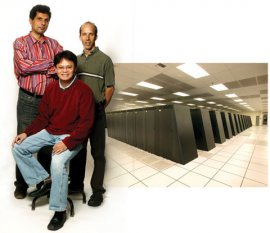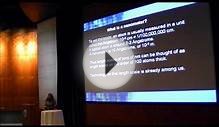
 Leading frontier physics research and development for national security and national goals.
Leading frontier physics research and development for national security and national goals.
The Physics Division (Physics) conducts frontier physics research and development in fields ranging from astrophysics and planetary science, to atomic, nuclear and particle physics, and plasma and high energy density physics. This work includes advanced science and technology development in optical and x-ray science, detectors, accelerators, lasers, space, and fusion. These R&D activities place LLNL at the leading edge of 21st century national security missions.
| Physics Division researchers, working with theoretical physicists from around the world, are using the worldâs most powerful computer, BlueGene/L, to fill in the missing information about the phase transition from quarks to larger particles that occurred about 10-millionths of a second after the big bang. Quantum chromodynamics (QCD) collaborators (left to right) Pavlos Vranas, Thomas Luu, and Ron Soltz depend on BlueGene/L for their calculations. "We need larger calculations to get good data, " says Luu. "BlueGene/L makes it possible." | |
There are four primary areas that manage these R&D activities:
—Comprising world-class scientists working in optical science, radiation detection, biophotonics, information science, imaging, and medical technology, Applied Physics supports the major program Ddrectorates at LLNL. This division supports biodefense, counter-nuclear terrorism, explosives detection, nuclear stockpile surveillance, medical technology and metrology and diagnostics for NIF.
—As the steward of nuclear data for the Laboratory, the Nuclear Particle & Accelerator Physics Division applies its expertise to national security, energy, and healthcare programs.
—This division conducts theoretical and experimental research in high energy density (HED) physics, astrophysics, and advanced diagnostic development, emphasizing areas important to major Laboratory programs.
—Advances interdisciplinary science and technology in areas central to establishing the scientific basis of magnetic and inertial fusion energy and to further the fundamental understand of plasma physics. FESP also advances particle beam science and technology associated with fusion energy, national security, and medical applications.
YOU MIGHT ALSO LIKE












